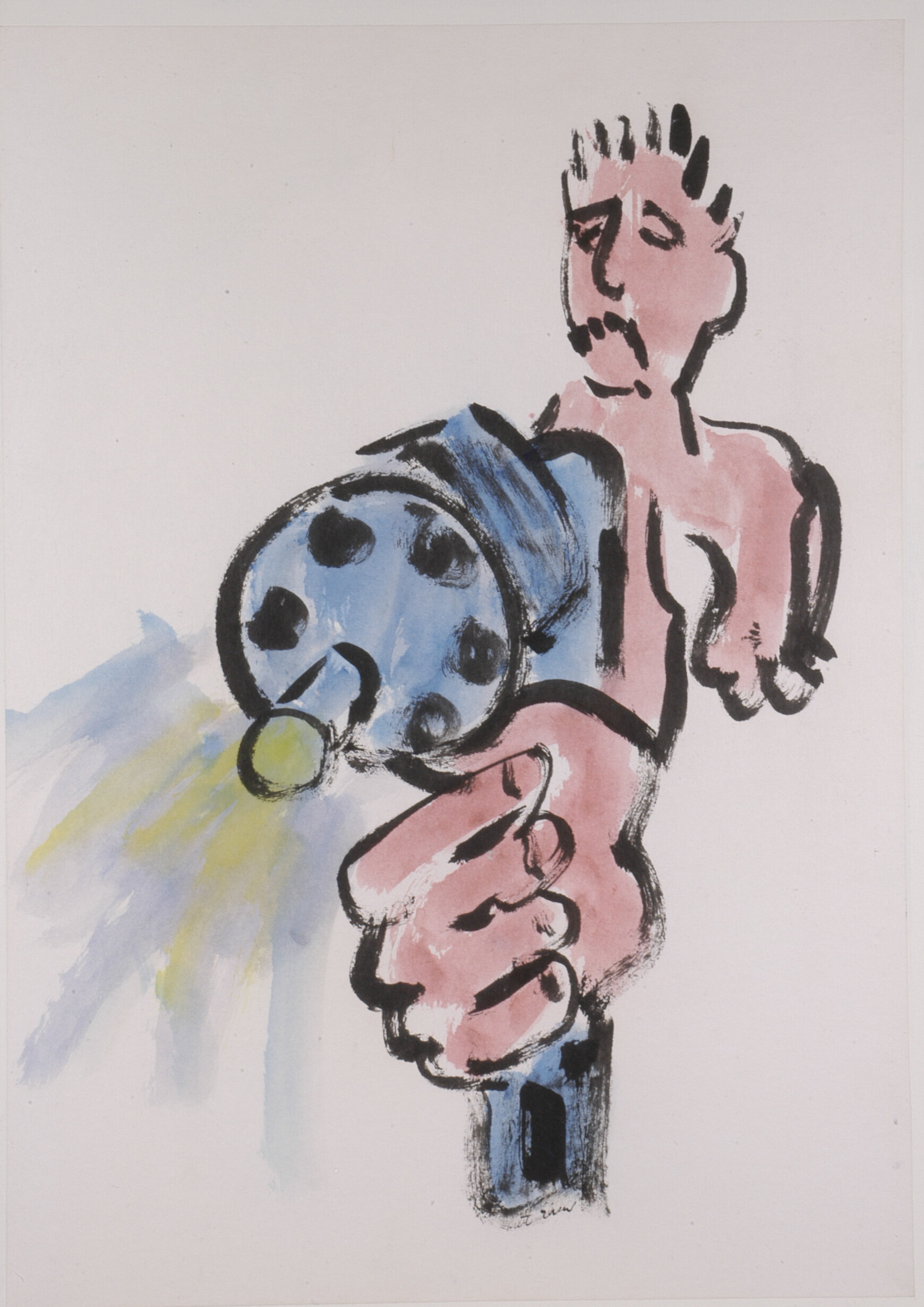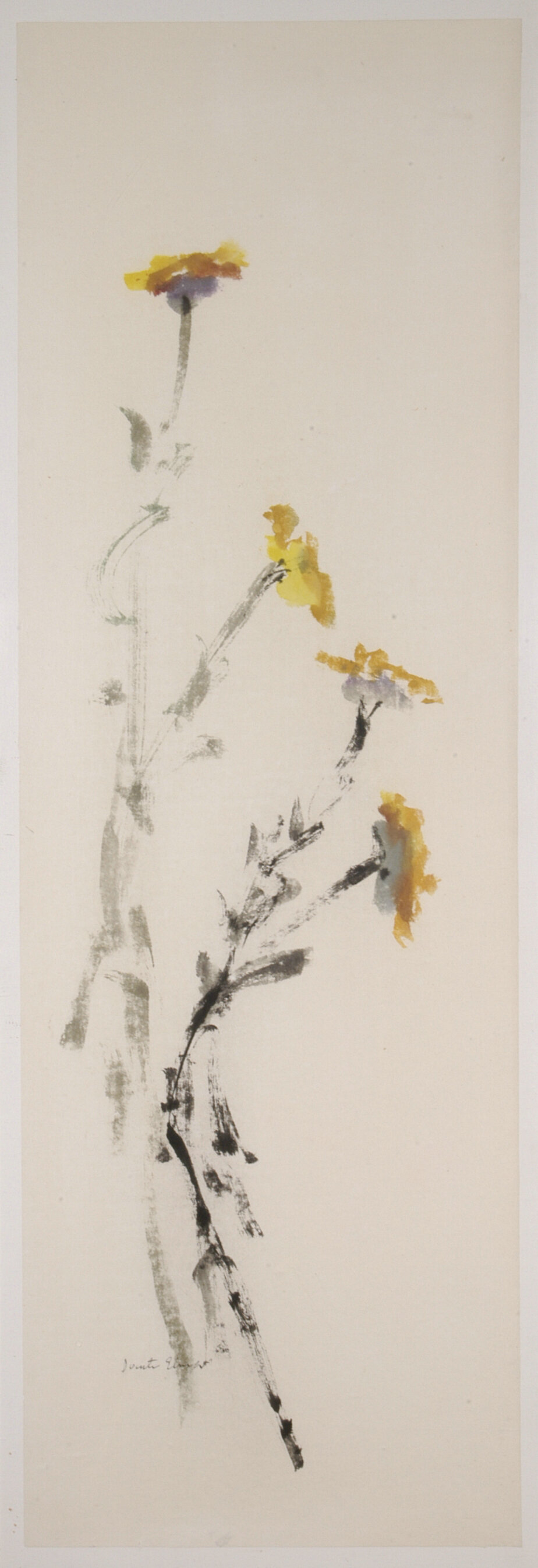













Dante painted works from life (still lives, grasses, landscapes, pictures of people, even some portraits, some paintings from models) as well as works governed by a metaphysical question or reflection. This second category included a series of satirical or humorous pictures as well as paintings inspired by spiritual teachings from Gurdjieff, Krishnamurti and Castañeda, Haiku poems, Shakespeare plays and Buddhist thought.
Inspired by the Japanese scroll form, Dante developed a method of mounting his pictures on an oblong panel stretched with canvas, which allowed a good deal of space above the picture and below it. His thinking was that painting represented the world of humans, whose function was to unite heaven and earth – represented by the space above and below – and that the artist, the subject and the viewer meet in the space between. This is an idea found in Gurdjieff but also in traditional Chinese and Japanese thought.


















